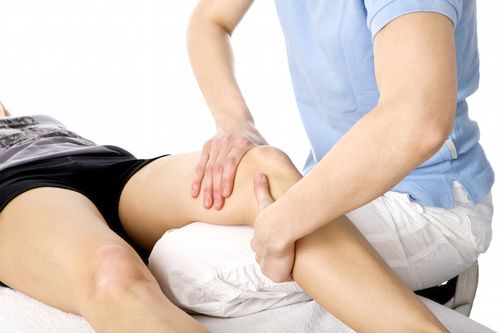Physiotherapy and movement therapies
We explore the world of physiotherapy and disciplines and therapies that concern the sphere of movement therapies . Which discipline can be the right one for you, which ones can help you regain well-being and correct posture.
> 1. Origins and methods of physiotherapy
> 2. The disciplines of movement
> 3. Our Physiotherapy Guides

Origins and methods of physiotherapy
Physiotherapy is the discipline of rehabilitation that covers the field of especially motor alterations , both in children and adults. The physiotherapist knows how to evaluate orthopedic, plotutological, neurological, cardiological and respiratory pathologies and propose a work plan measured on the patient. The physiotherapist intervenes in the acute phase, in rehabilitation, in prevention and health promotion as well as in palliative care.
If we return to the etymological root, we understand that the word derives from the union of the Greek words Φυσιο = natural and θεραπεία = therapy. Already around 480 BC Hippocrates and later Galen proposed treatments such as massage, manual therapy techniques and hydrotherapy, so much so that they can be considered as the first practitioners of physiotherapy.
The real nucleus of structuring this healing practice is found in the figure of the Swedish Pehr Henrik Ling , father of “Swedish gymnastics”, who founded the ” Royal Central Institute of Gymnastics” (RCIG) in 1813 for massages, manipulations and exercises. It is no coincidence that the Swedish word for physiotherapist is “sjukgymnast” = “gymnast of the sick”. In 1887, physiotherapists obtained official registration with the Swedish National Council for Health and Welfare.
From there the discipline has had a notable development and evolution, coming to understand many techniques for rehabilitation that the physiotherapist knows how to use according to the need. There are many treatment methods that fall within this discipline: kinesitherapy (segmental kinesitherapy , passive kinesitherapy, joint mobilization, passive mobilization and active mobilization, muscle strengthening, isokinetic rehabilitation, mechanotherapy, gymnastics in the pool, vertebral extensions, manual vertebral tractions, tractions vertebral mechanics, etc.), motor education, functional education, proprioceptive rehabilitation , general therapy(manual massage, local massage, muscle massage, district massage therapy, connective tissue massage, reflexology massage, hydromassage, underwater massage, therapeutic and sports massage).
Physical therapy is divided into: and analgesic electrotherapy ( iontophoresis , tens , galvanic, diadynamic, interferential currents, exponential currents, Kotz currents, etc.), and stimulating, perineal electrotherapy, biofeedback, thermotherapy, magnetotherapy.
There are an infinite number of methods regarding manual therapy : the Bienfait method, the Ciriax method, the McKenzie method, the Kaltenborn concept, the Maitland concept and other mobilization-manipulation manual therapies, which can also be defined as myofascial or neuromuscular therapies.
Physiotherapy also includes the large naturopathic branches of drotherapy ( electric baths, hyperthermic baths, medical showers and baths, thermal therapy) and infodrainage ( manual or instrumental). If we then enter the great field of neuromuscular facilitation techniques we find the Vojta Method, Kabat Method, Bobath Method, Perfettii Method (which we also know by the name of “cognitive rehabilitation”) the Grimaldi Method.
Alongside physiotherapy, and often as a natural extension of the study of the same, there is a wide range that has its central knots in osteopathy and chiropractic .
Free bodies and movement: between physiotherapy and acupuncture
The disciplines of movement
What is in the body is in the mind . The meeting of the two dimensions is constant, like a one-to-one arrow. While it is true that post-trauma rehabilitation plays a very important role, it is equally true that posture can be spoiled with emotions. This is why it is good to get in touch with the main movement therapies.
An experienced physiotherapist knows postural re -education which can include techniques of relaxation and postural alignment, corrective gymnastics , aimed at the treatment of postural defects of the spine (e.g. kypho-lordotic or scoliotic attitude ) and some orthopedic defects of the lower limbs (varus or valgus knee , flat or hollow foot, etc.).
If we look at the new frontiers of this medical gymnastics we cannot fail to contemplate the “Rebalancing of the muscular structure” by Meziérés and the global postural re-education of Souchard .
Our guides on physiotherapy
In this section you will be able to consult files concerning physiotherapy and movement in their most global meanings, which also include an approach both to proprioception and to the dimension of physical disciplines that could be traced back to yoga , in the sense of alignment and integral work .
Similarly, a body that moves according to rules of joint physiology can also be a body that experiences transitions and movement with a discipline that also appeals to the mind, as in the case of tai chi chuan .
We would like to offer you a broad spectrum, which takes into account the evolution of neuroscience applied to movement and physical therapies that also involve the interior .
























+ There are no comments
Add yours